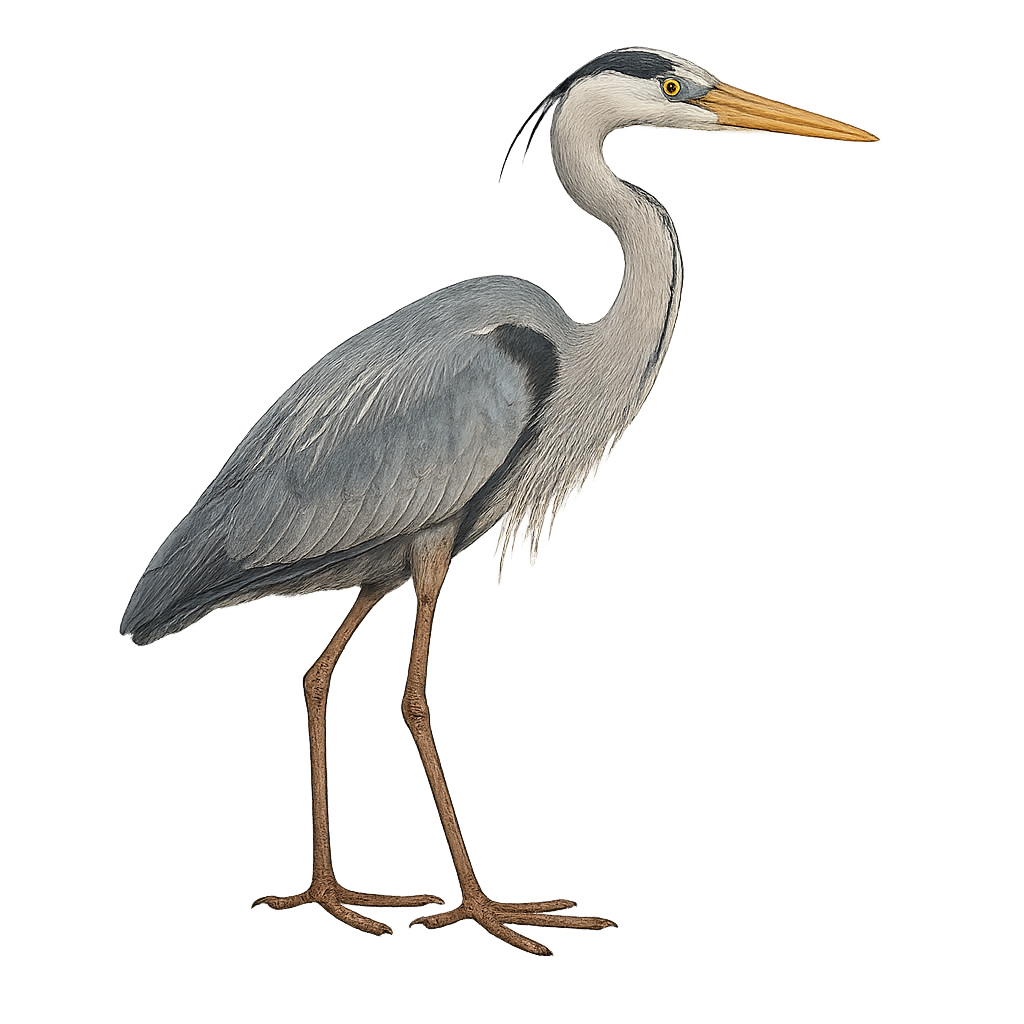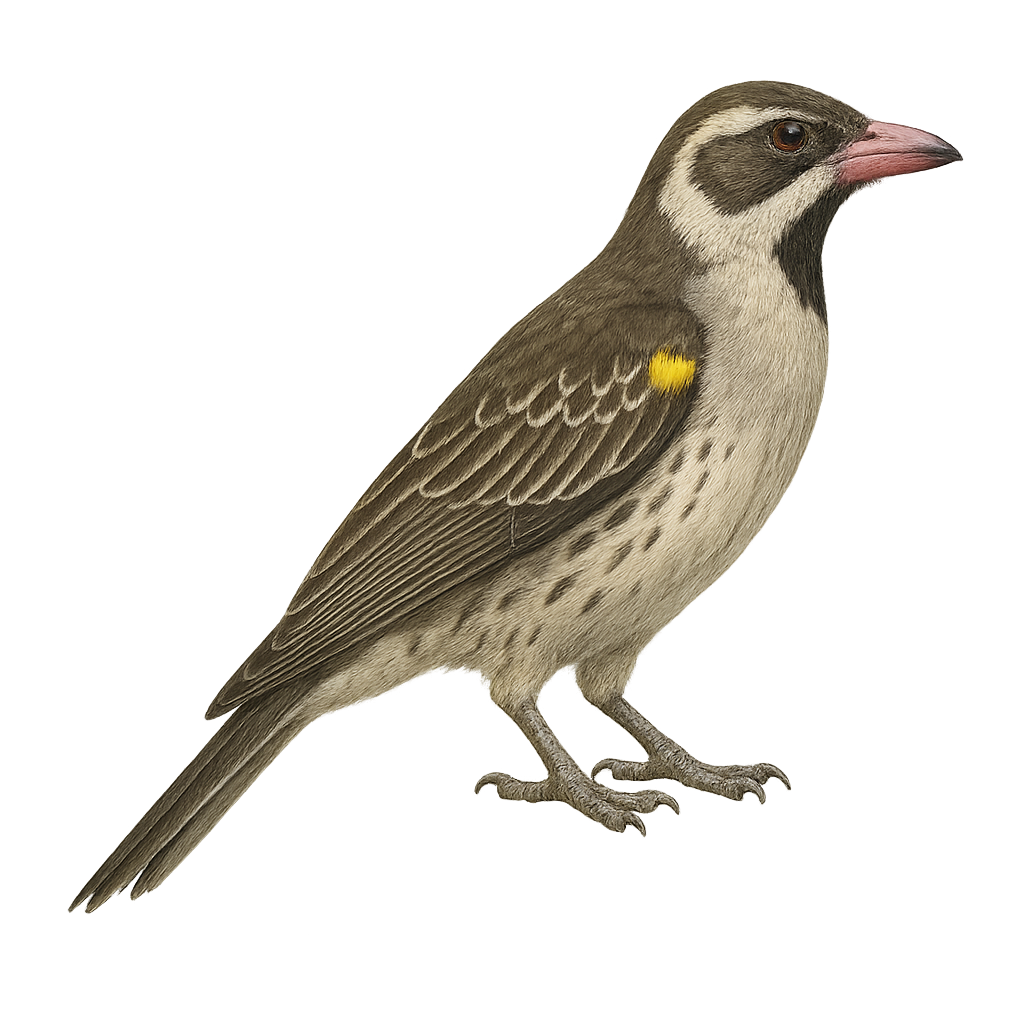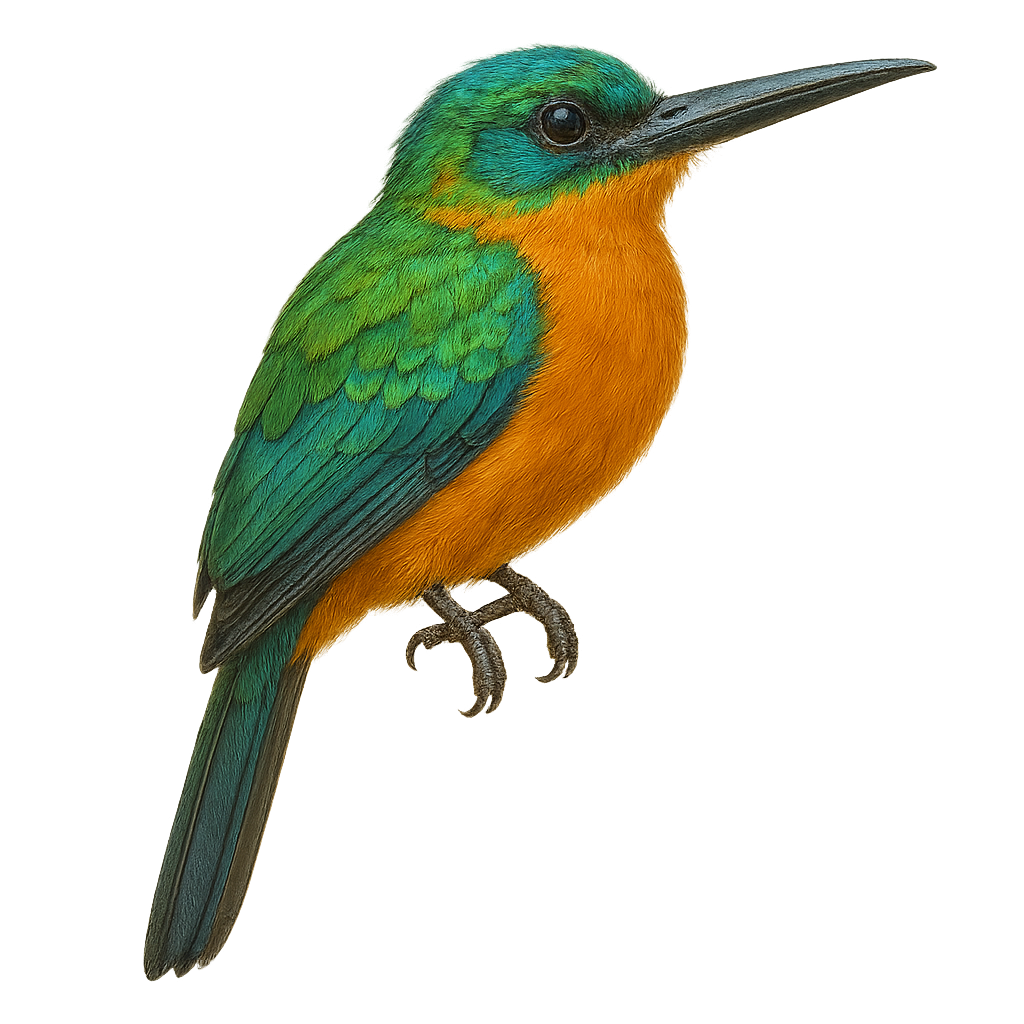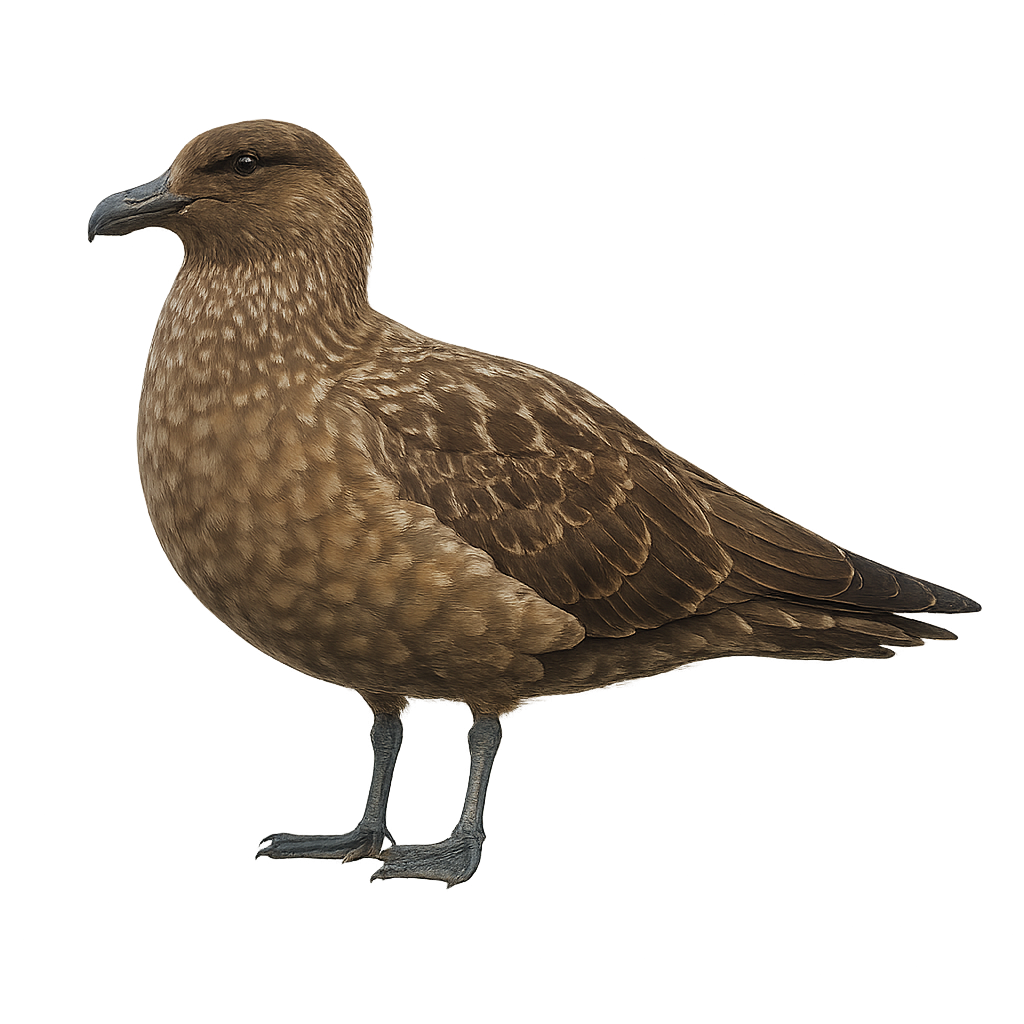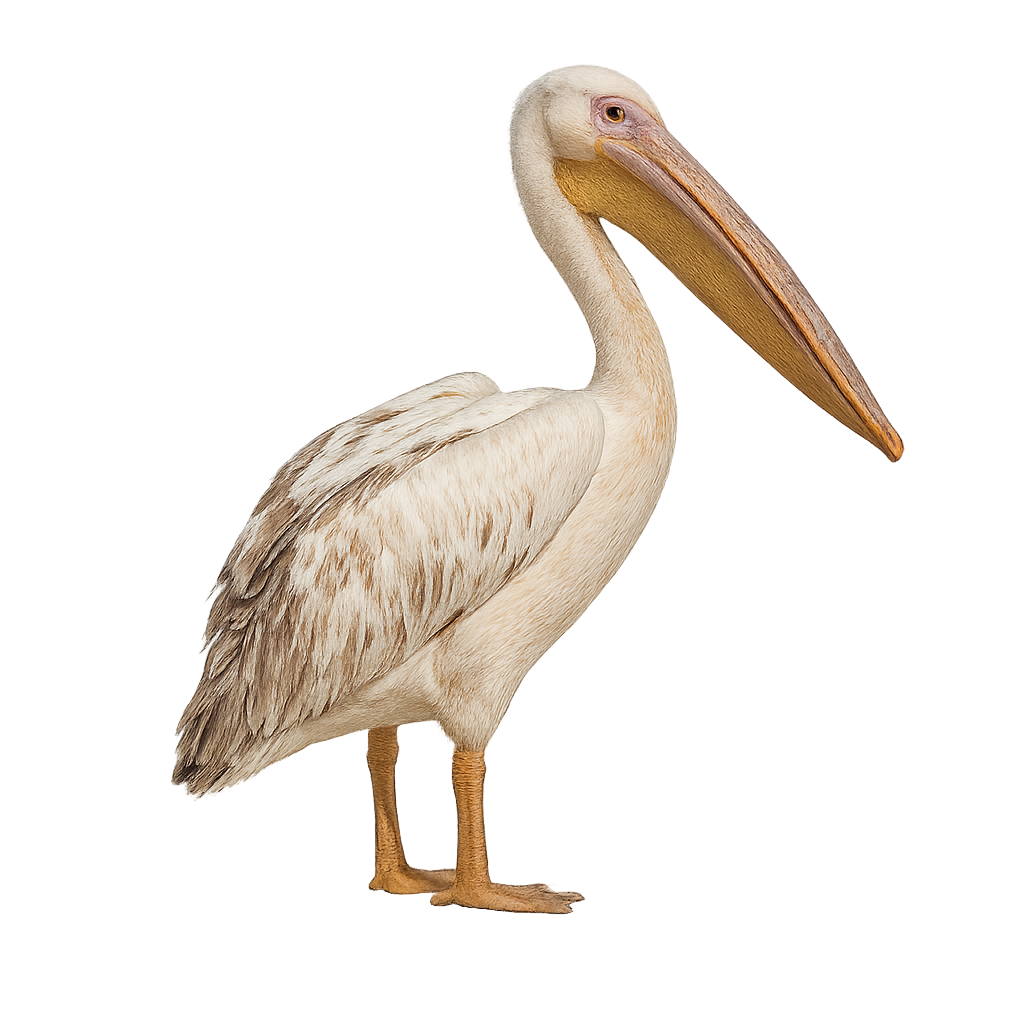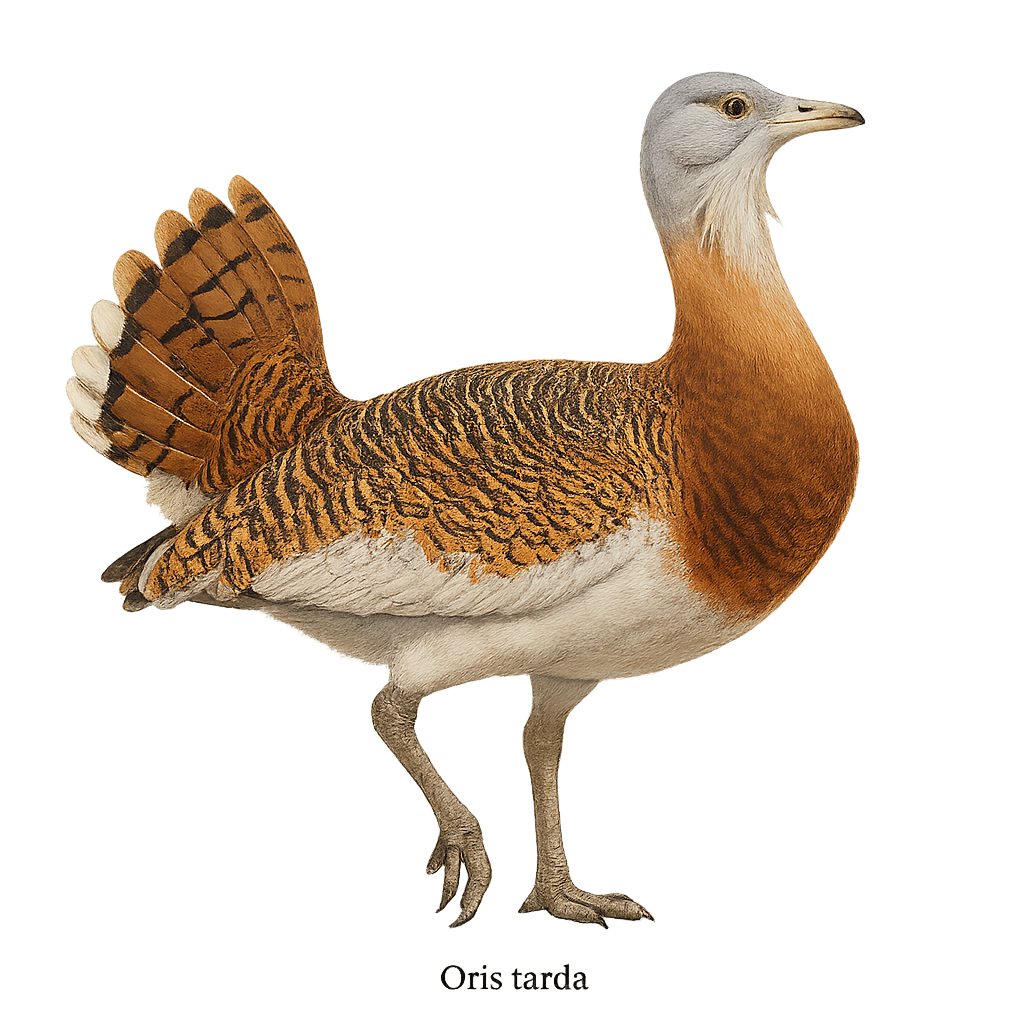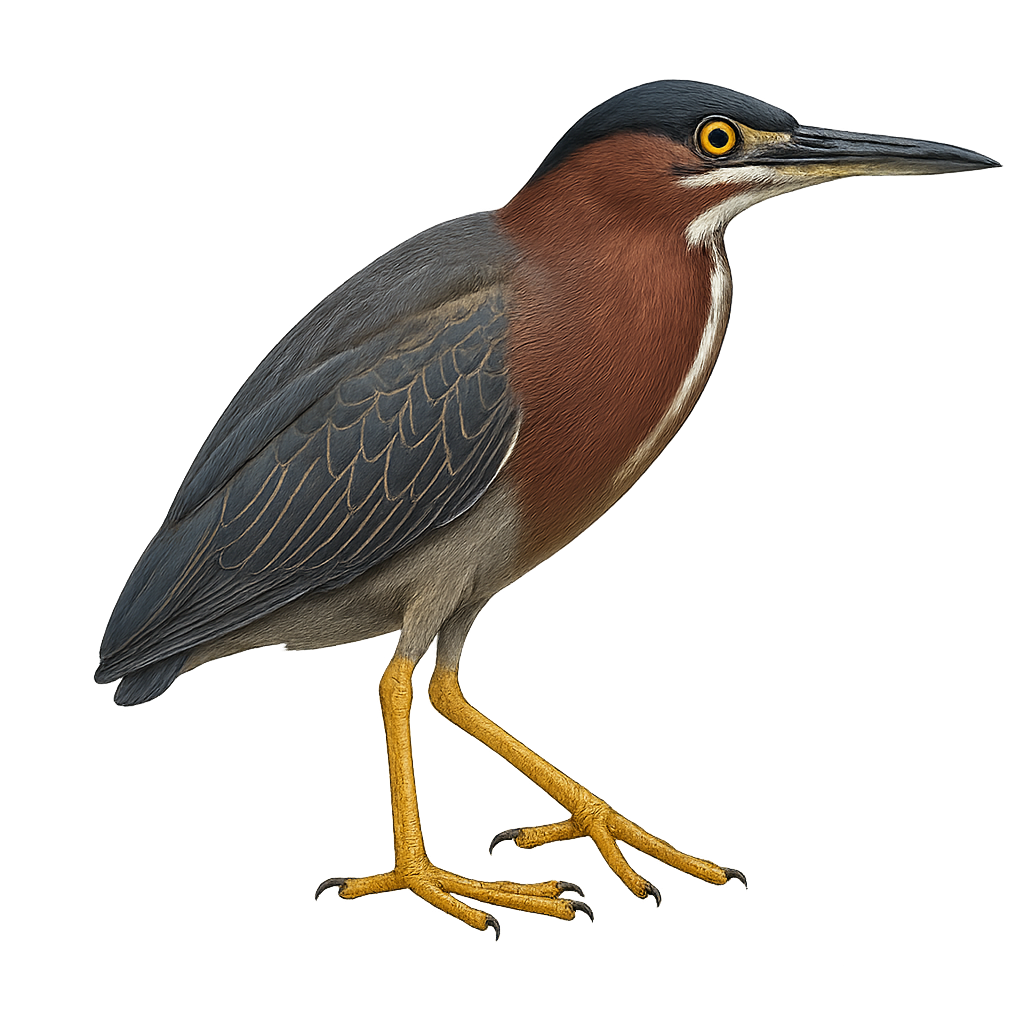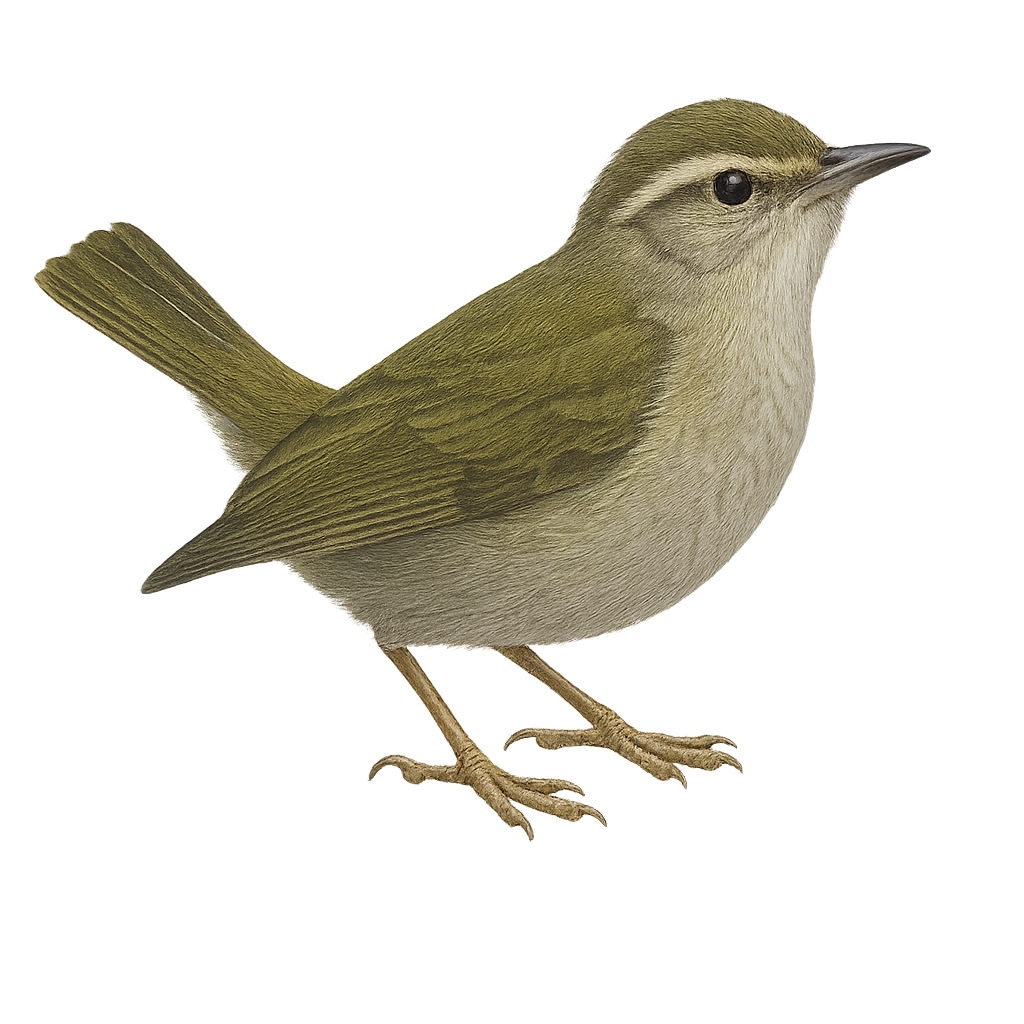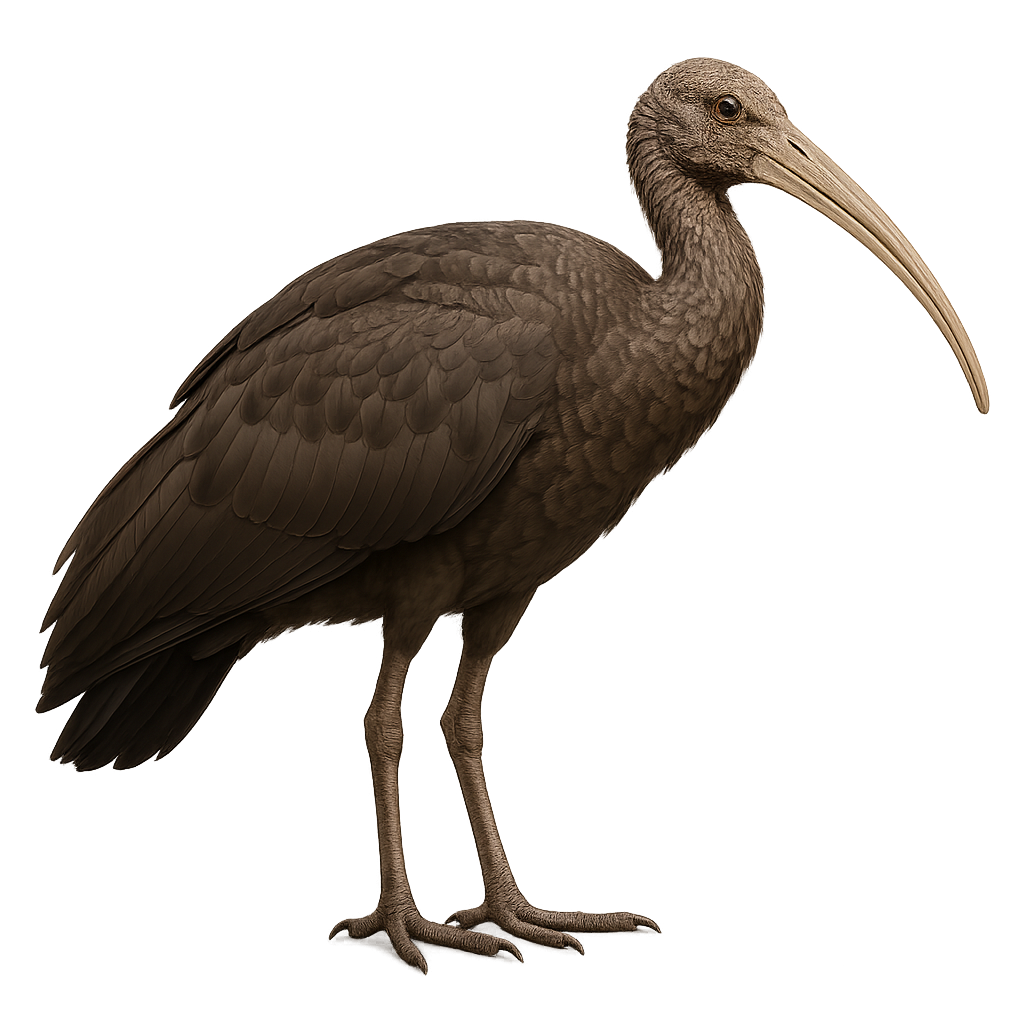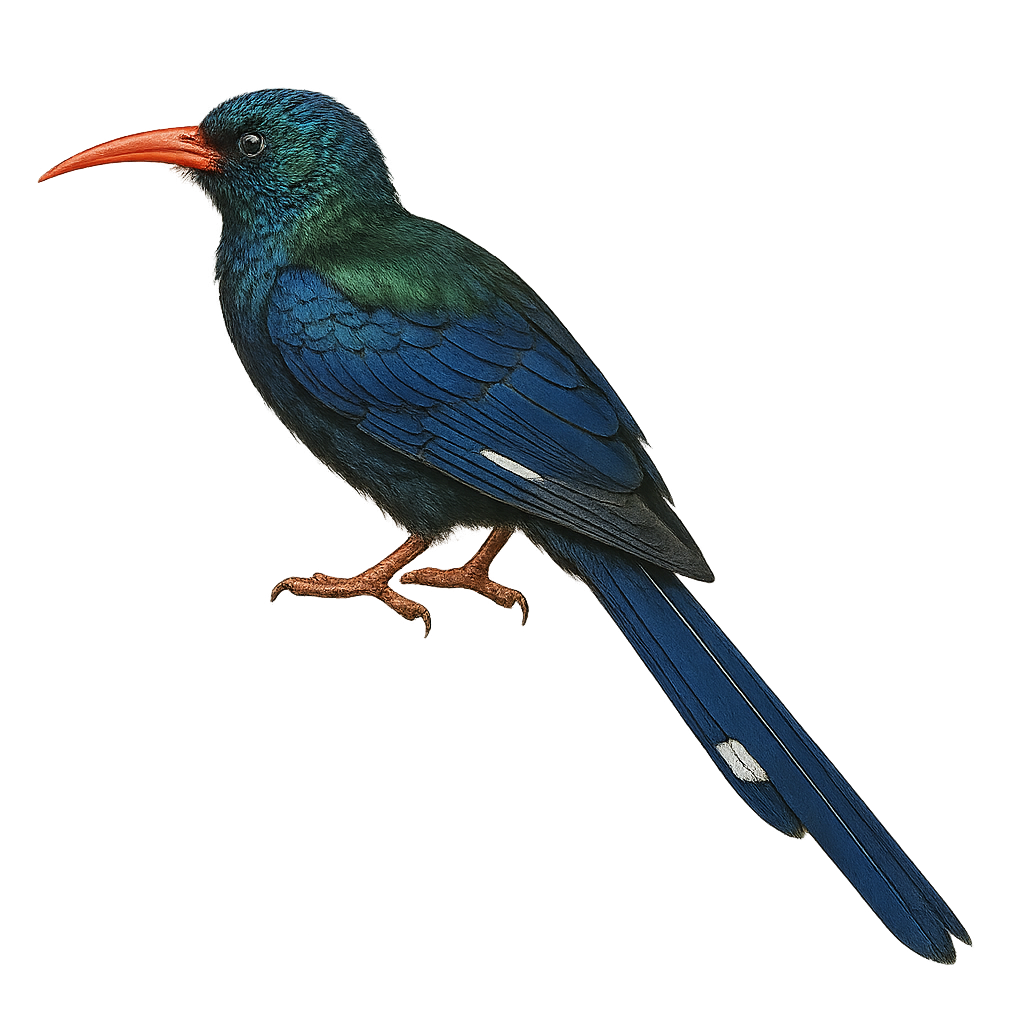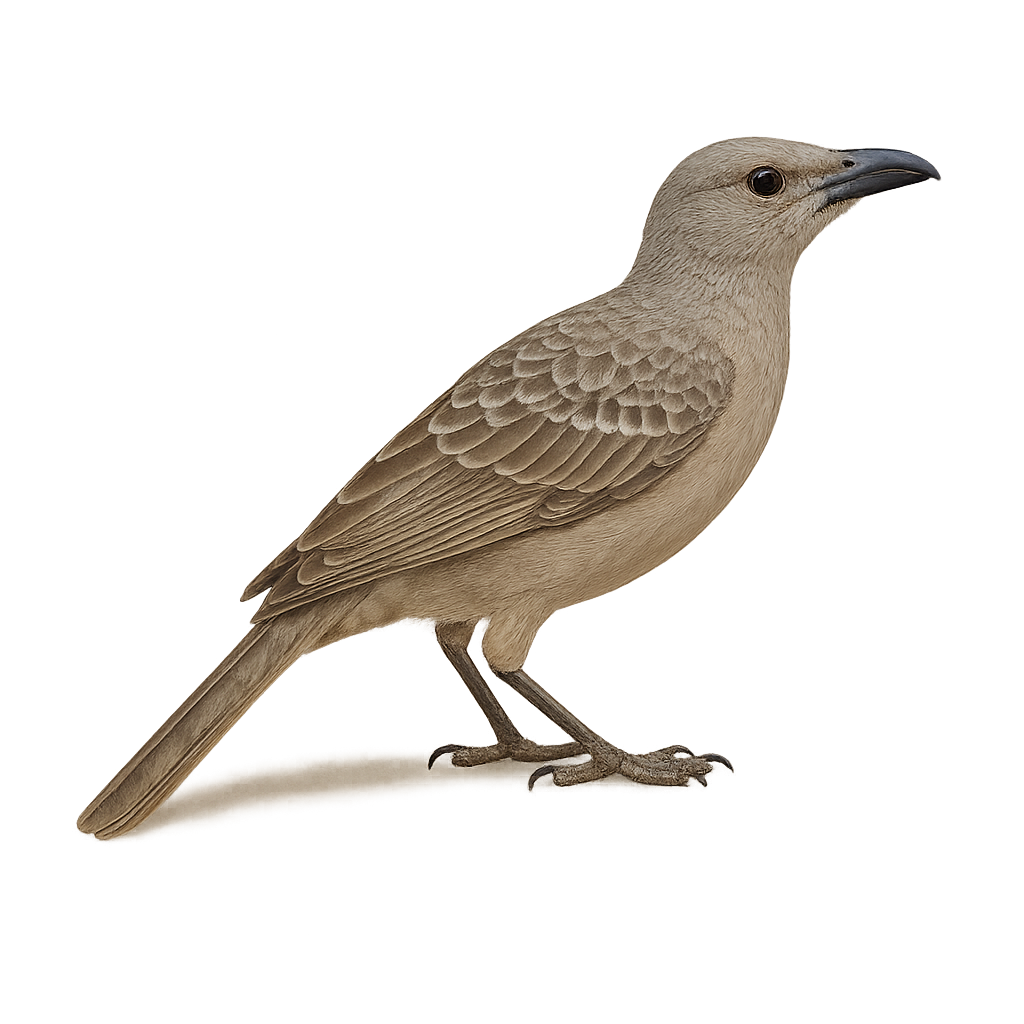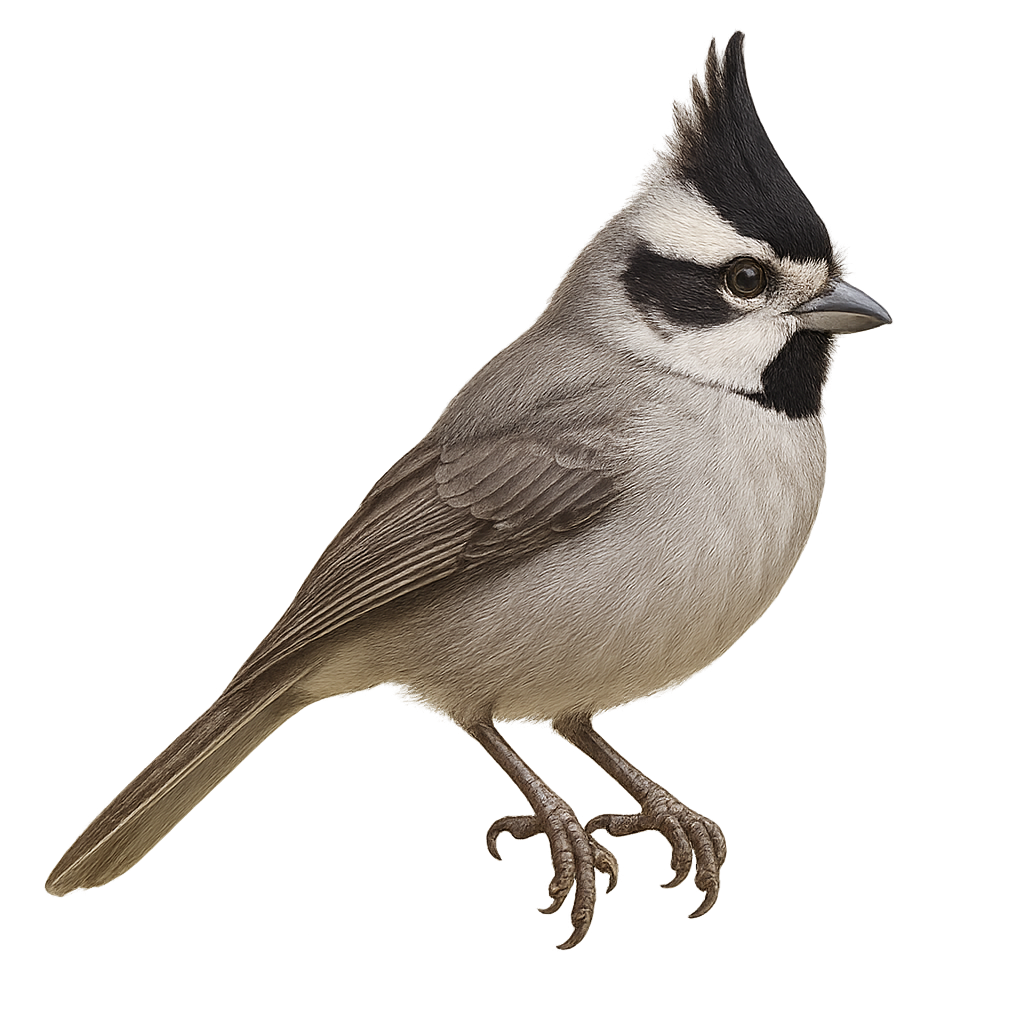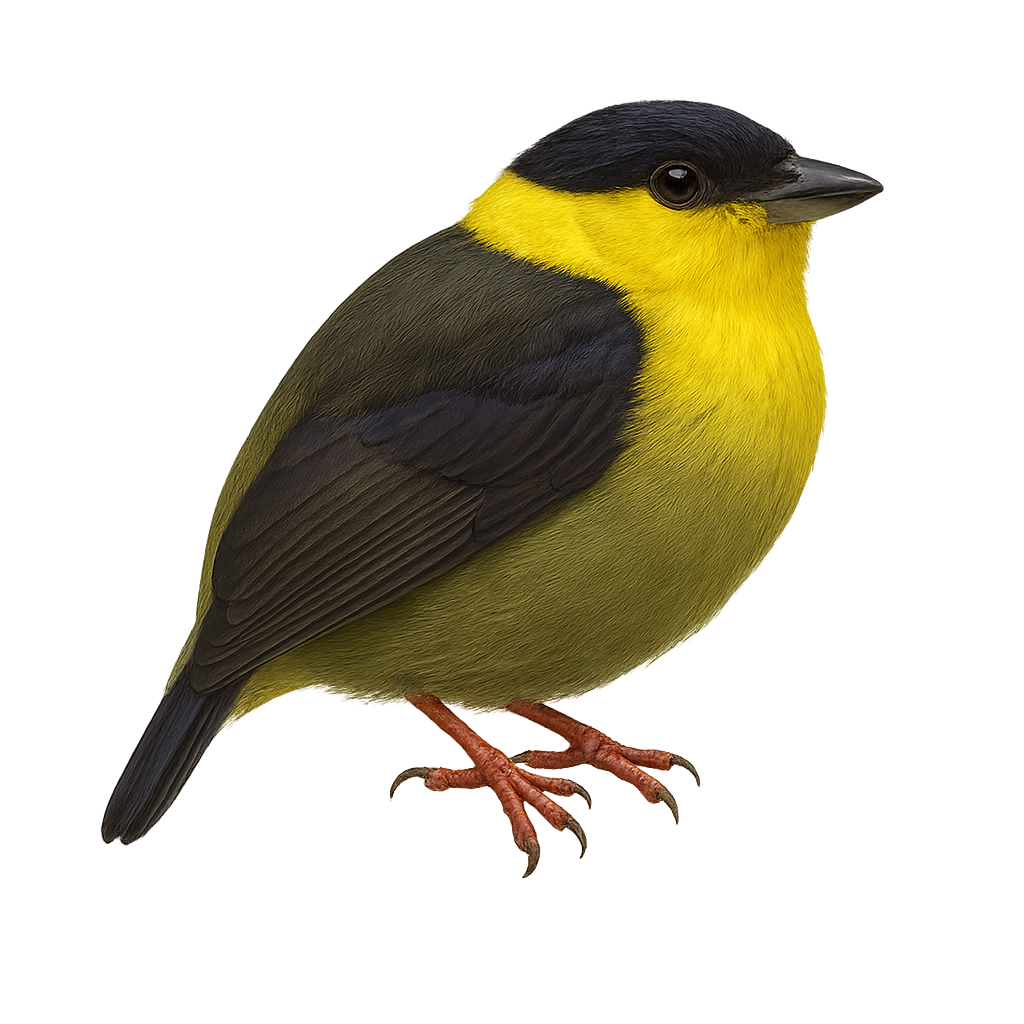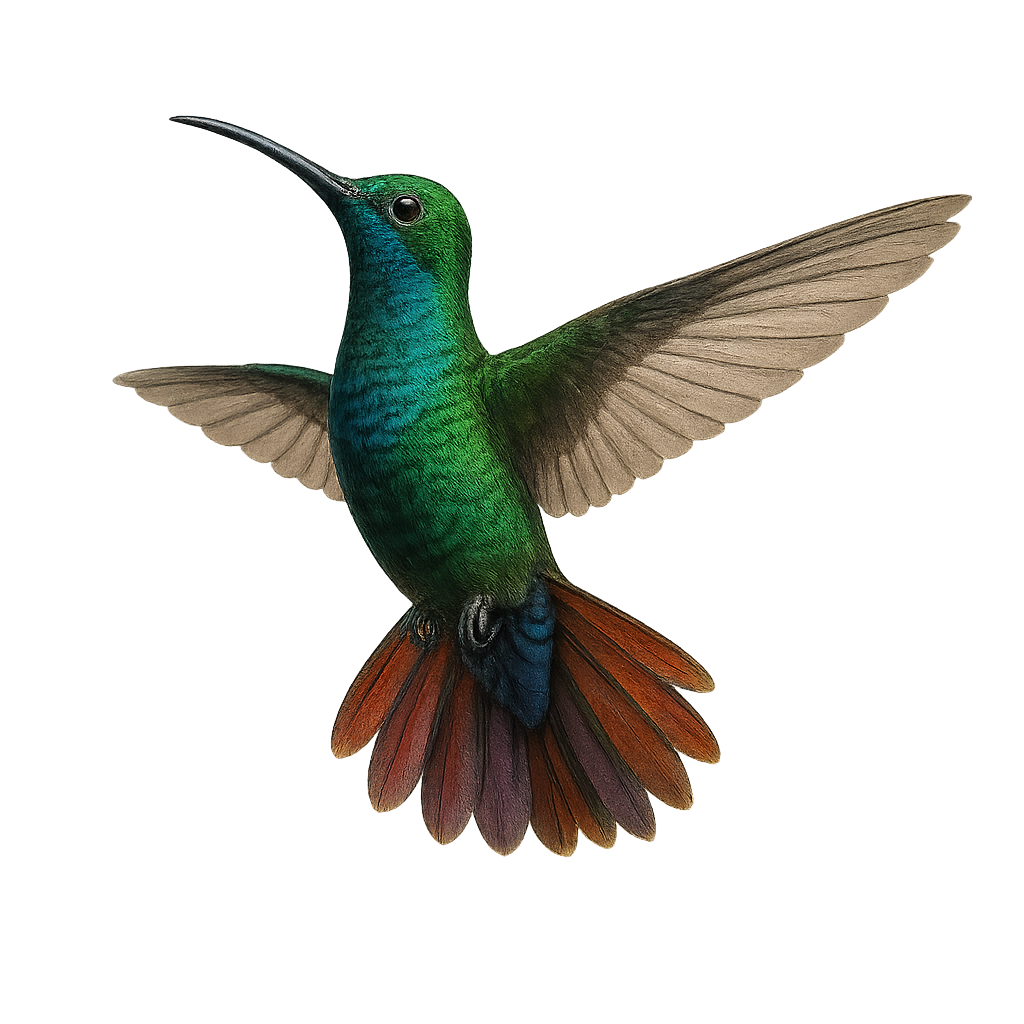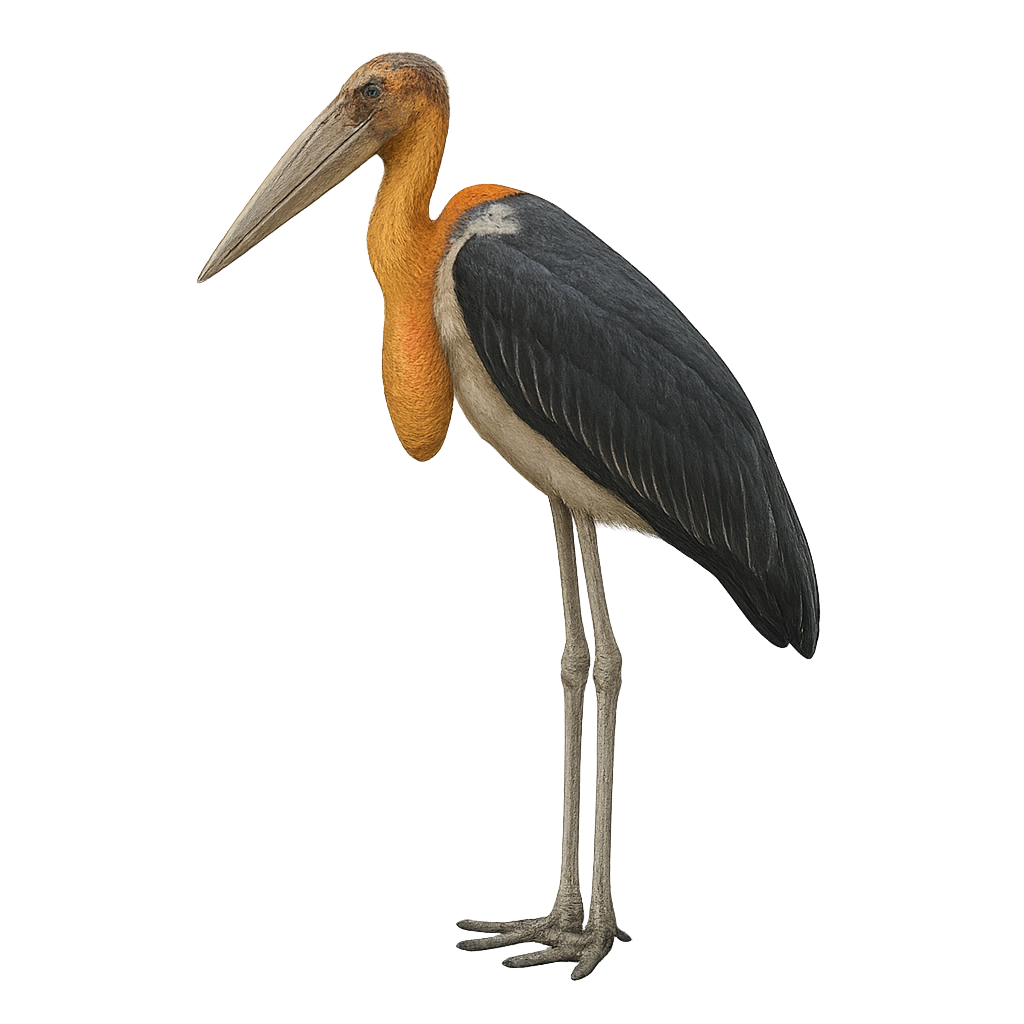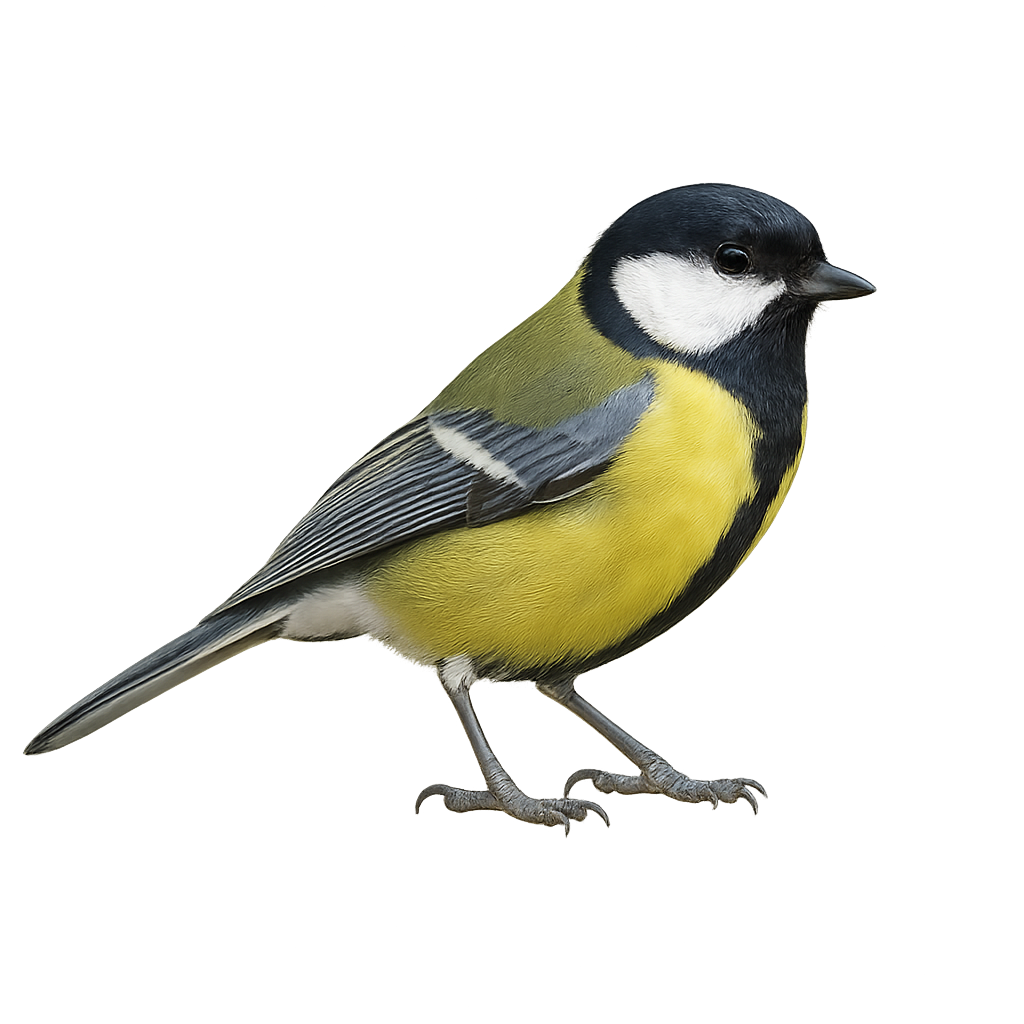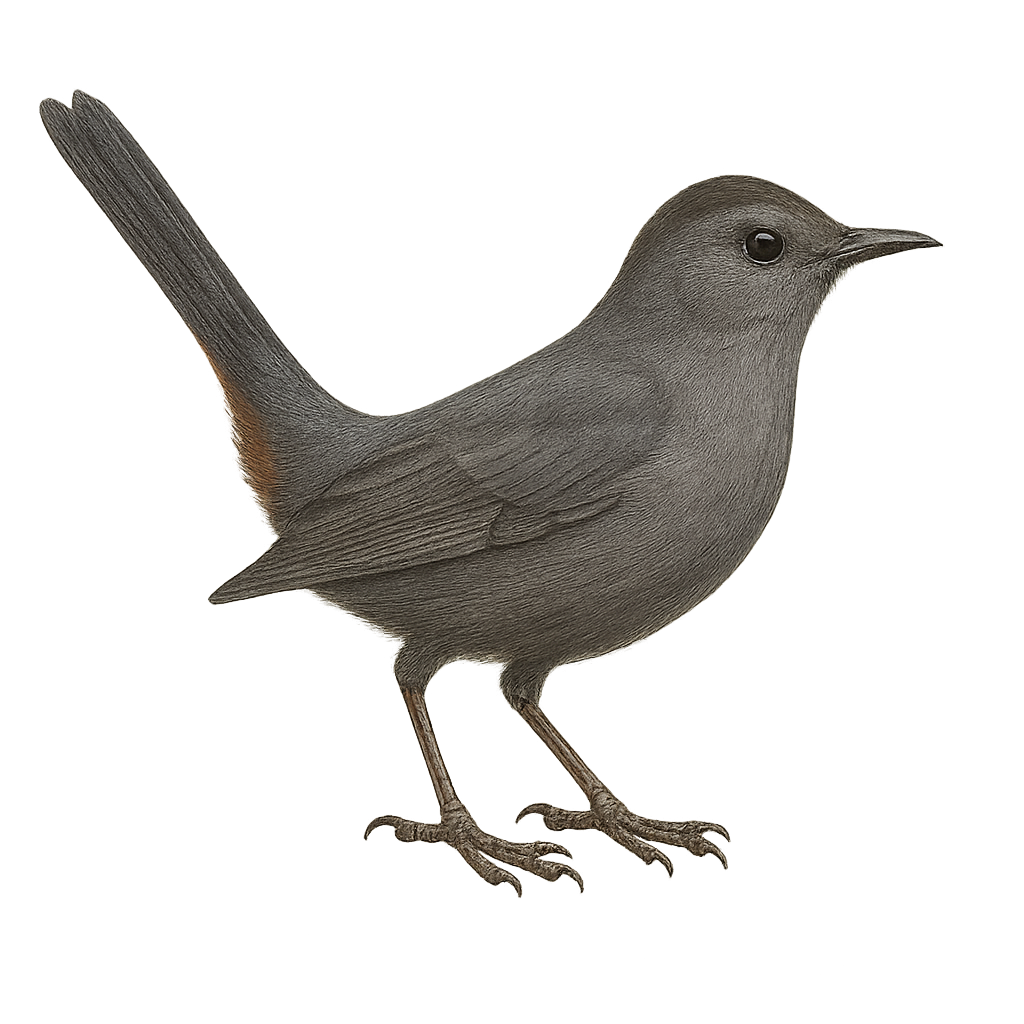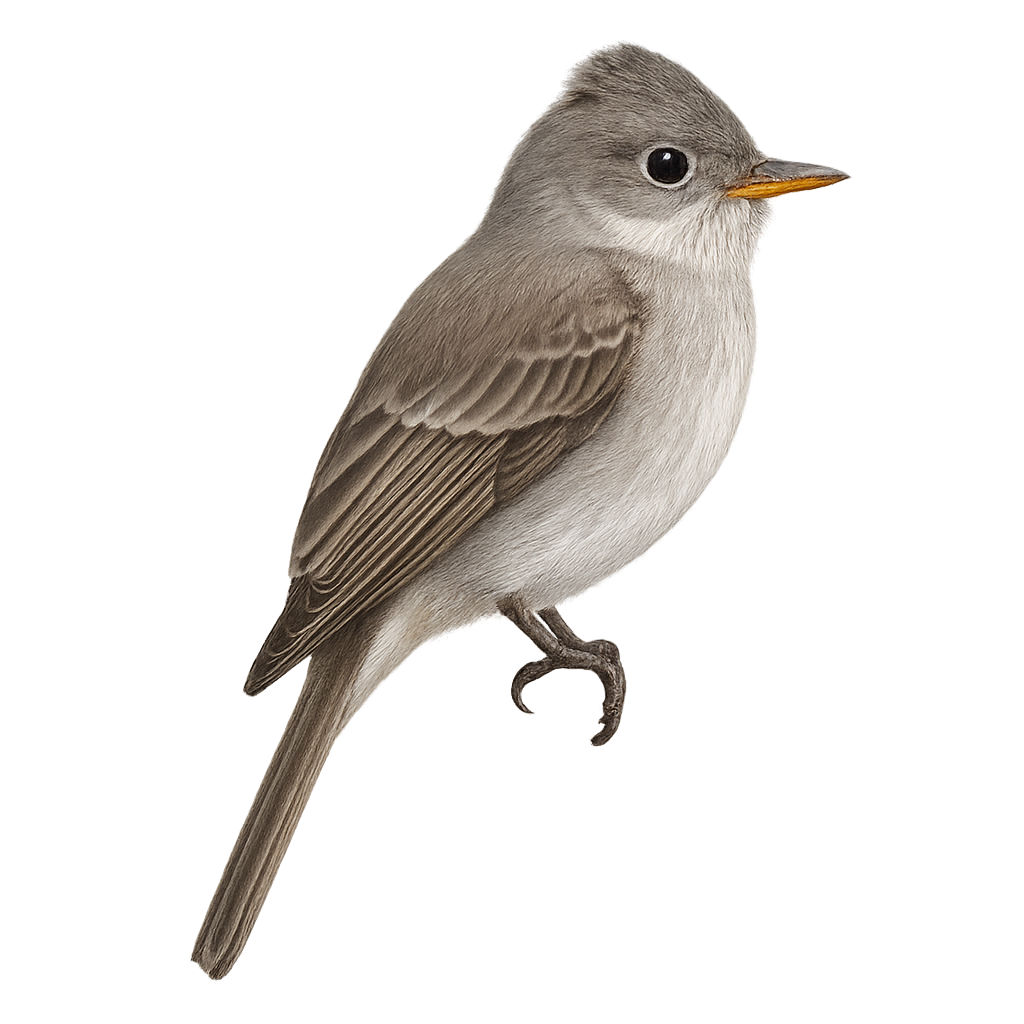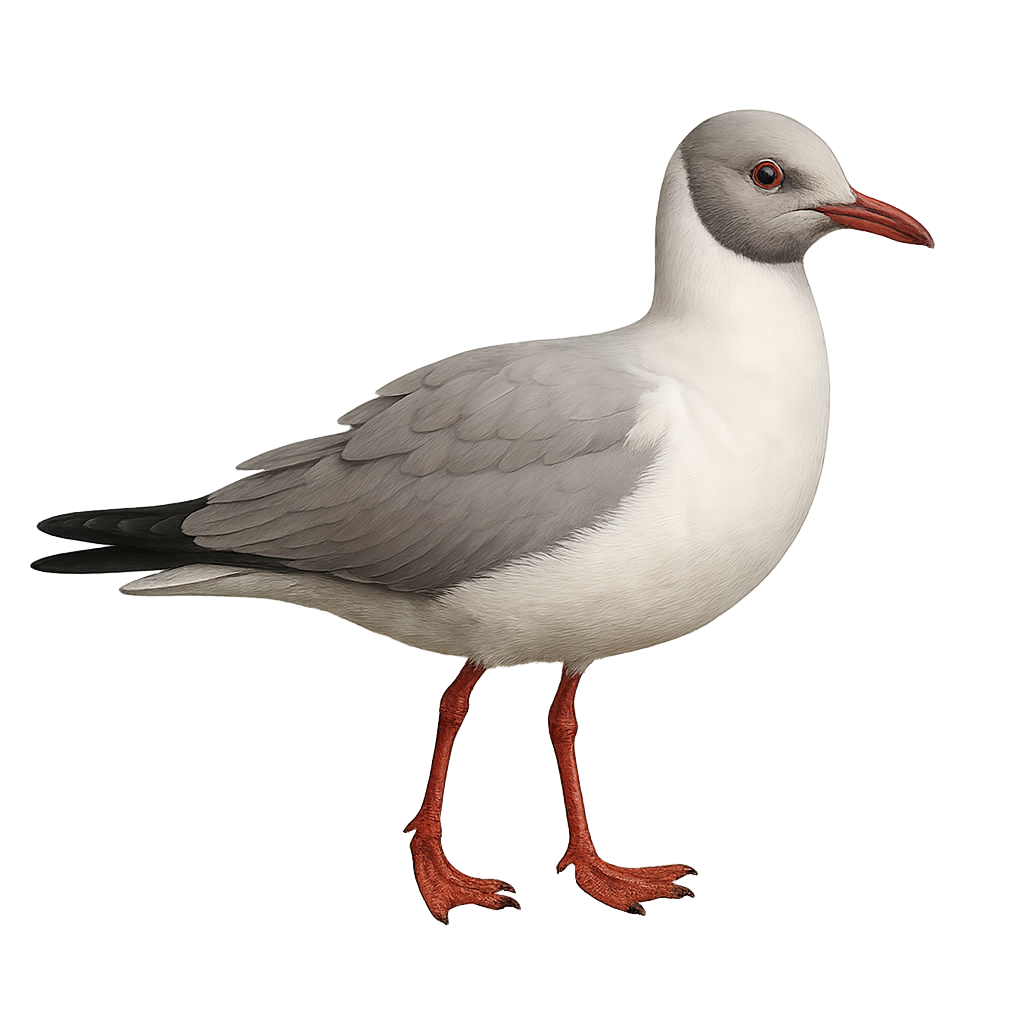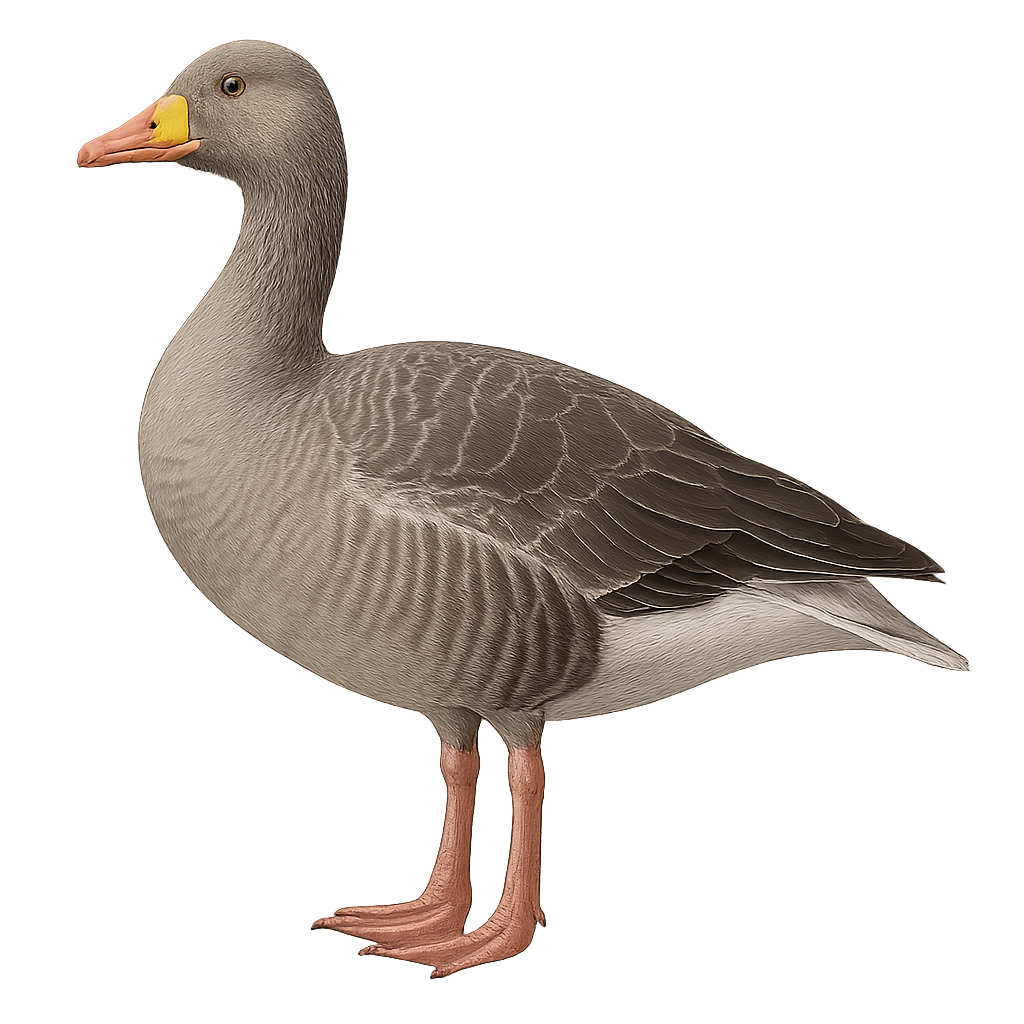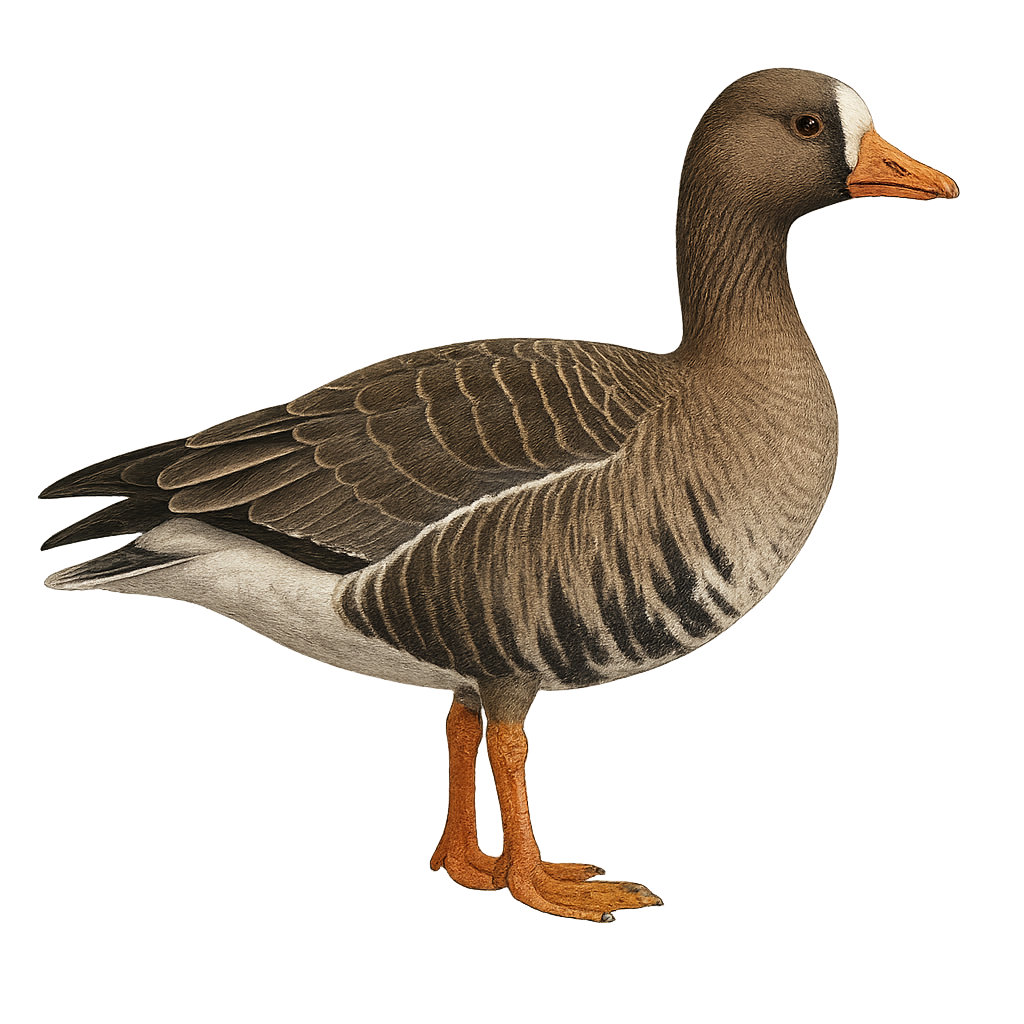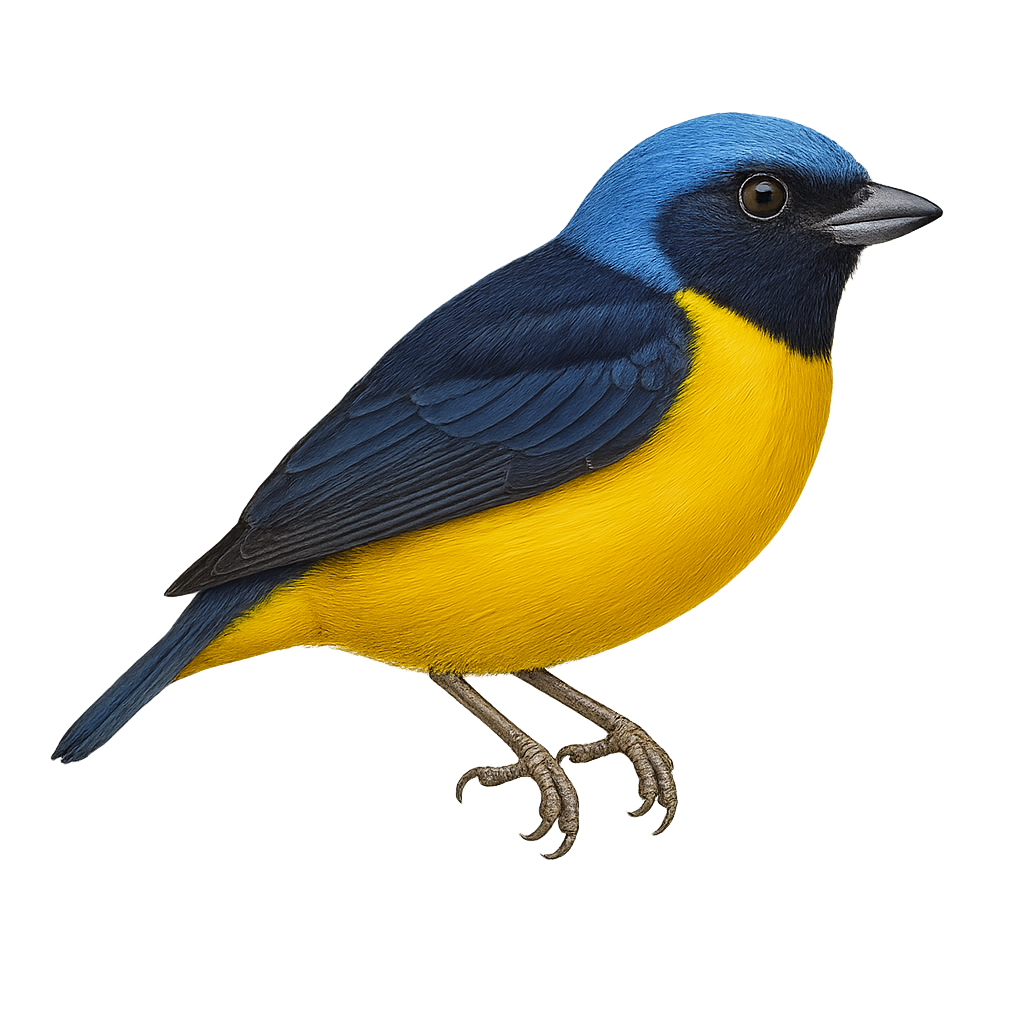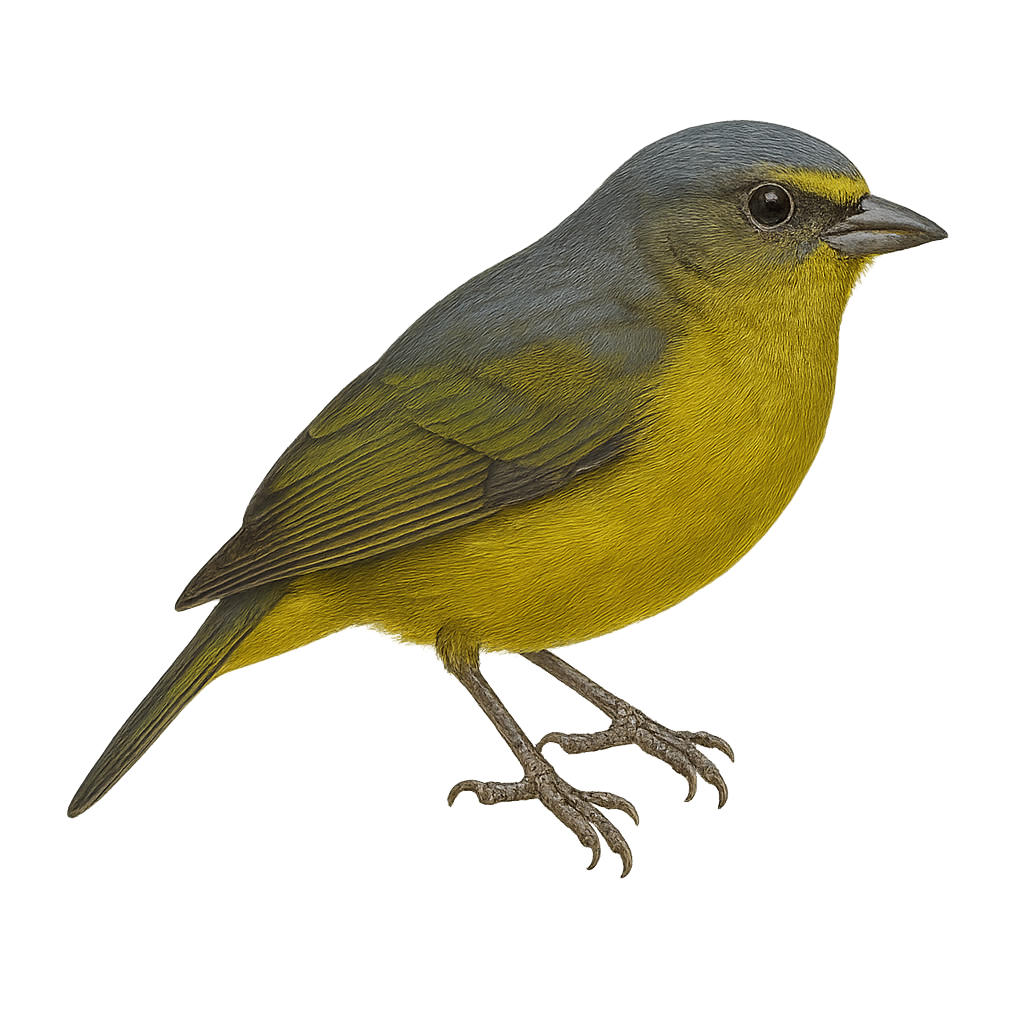The Great Blue Heron, Ardea herodias, is a majestic bird native to North America's wetlands. With an impressive wingspan of up to 2 meters, it is easily recognized by its blue-gray plumage, white head with a black stripe, and long yellow bill. It inhabits marshes, rivers, and lakes, feeding mainly on fish, but also on small mammals and insects. Its flight is slow and powerful, with deep wing beats. The Great Blue Heron is a solitary bird, although it may gather in colonies for nesting. It builds its nest in trees or shrubs, often high up to avoid predators.
The Greater Honeyguide is a fascinating bird known for its symbiotic relationship with humans and some mammals. It guides them to wild bee hives, hoping they will open them to access the larvae and wax. This medium-sized bird, with brown and white plumage, is mainly found in sub-Saharan Africa. It has a sturdy beak and a relatively long tail. Its song is a mix of whistles and trills. Although often seen following humans, it remains wary and prefers to keep its distance. The Greater Honeyguide is a diurnal bird, active mainly in the morning and late afternoon.
The Great Jacamar, or Jacamerops aureus, is a captivating bird found in the tropical forests of South America. Averaging around 25 cm in length, its dazzling plumage with golden hues makes it a visual spectacle. It primarily feeds on insects, which it catches in flight with its long, slender bill. This bird is often seen perched on low branches, scanning its surroundings for prey. Although its song is subtle, it plays a crucial role in communication among individuals. The Great Jacamar is a solitary bird, but it can occasionally be seen in small family groups.
The Great Skua is a large, powerful seabird, belonging to the Stercorariidae family. It measures about 50 to 60 cm in length, with a wingspan of 120 to 130 cm, and weighs between 500 and 1,000 g. Its plumage is primarily brown and gray, with white markings on the wings and a generally dark head. The Great Skua is a migratory bird, found mainly in the coastal regions of the North Atlantic, particularly in Northern Europe, Iceland, Greenland, and parts of Canada. It is especially known for its piratical behavior, stealing food from other seabirds, such as gulls or fishing birds, by chasing them and forcing them to abandon their catch. While territorial, it is also an excellent swimmer and diver, feeding mainly on fish and crustaceans. The Great Skua is vulnerable to the loss of its coastal habitat and human disturbances, including pollution and disruptions caused by tourism.
The Great White Pelican, or Pelecanus onocrotalus, is a large aquatic bird easily recognizable by its bright white plumage and long, voluminous bill with an expandable pouch. It primarily inhabits freshwater lakes and marshes, but can also be found in estuaries and coastal lagoons. This gregarious bird is often seen in large groups, flying in formation or resting on shores. It feeds mainly on fish, which it catches by dipping its bill into the water. Its collective fishing technique is fascinating, as several individuals form a circle to trap fish. The Great White Pelican is a symbol of cooperation and harmony in nature.
The Great Horned Owl is a large nocturnal raptor, one of the most imposing owls on the American continent. It measures between 50 and 70 cm in length, with a wingspan of 1.2 to 1.5 meters, and weighs between 1.5 and 2.5 kg. Its plumage is mainly brown, speckled with black, with lighter markings on its belly and wings. It has large tufts of feathers on its head that resemble ears, and piercing yellow eyes. This owl inhabits a variety of habitats, including forests, wooded areas, and open landscapes across North America, notably in the United States, Canada, and Central America. It is primarily nocturnal and carnivorous, feeding on small mammals, birds, and occasionally reptiles. It is also known for its impressive hunting abilities, flying silently to surprise its prey. Although the Great Horned Owl is not currently threatened, it may be affected by habitat loss and human disturbance.
The Great Egret is a large wading bird, easily recognizable by its entirely white plumage, long legs, and long, sinuous neck. It stands about 85 to 105 cm tall, with a wingspan of 1.3 to 1.7 meters, and weighs between 800 and 1,500 g. The Great Egret has a long, slender yellow beak and bright green eyes. It primarily inhabits wetlands, marshes, estuaries, and lake shores in Europe, Africa, Asia, and the Americas. This bird is an excellent fisherman, feeding mainly on fish, crustaceans, and aquatic insects, which it captures by diving or slowly probing the water with its beak. During the breeding season, the Great Egret is known for its elegant courtship dances and its plumage adorned with long, delicate feathers, giving it a majestic appearance. While the species is not endangered, it is sometimes threatened by habitat loss and water pollution.
The great bustard, Otis tarda, is one of the heaviest flying birds. It is recognizable by its brown and white plumage, with distinctive patterns on the wings. Males, larger than females, sport a white feather mustache during the breeding season. This bird prefers vast open plains and steppes, where it feeds on plants, insects, and small vertebrates. The great bustard is a symbol of bird conservation in Europe, as it is threatened by habitat loss and hunting. It is known for its spectacular courtship displays, where males puff up their feathers to impress females.
The Great Crested Grebe is the largest of the European grebes, measuring between 46 and 51 cm in length with a wingspan of 85 to 90 cm. In breeding plumage, it has a black crest, a reddish collar, and a long, pointed bill. In non-breeding plumage, it is more subdued, with a dark back and a light belly. It inhabits shallow lakes, ponds, and marshes, often surrounded by aquatic vegetation. It primarily feeds on fish, aquatic insects, and small crustaceans. Reproduction occurs in spring and summer, with a clutch of 3 to 6 eggs laid in a floating nest. The young, with black and white striped plumage, are often carried on the parents' backs. A partial migrant, it winters in the Mediterranean and warmer regions. Listed as Least Concern by the IUCN.
The Grey Heron is a large wading bird, easily recognizable by its slender silhouette, long neck, and large legs. It stands about 90 cm tall, with a wingspan of 1.5 to 1.9 meters, and weighs between 1.5 and 2 kg. Its plumage is primarily gray, with white markings on the belly and underside of the wings, and a white head adorned with distinctive black feathers. It has a long, pointed yellow beak, adapted for capturing its prey, primarily fish, amphibians, insects, and occasionally small mammals. The Grey Heron inhabits wetlands, marshes, rivers, and lakes across Europe, Asia, and North Africa. It is an excellent hunter, patiently waiting by the water's edge to capture its prey with its beak. Although the species is not endangered, it can be vulnerable to water pollution, habitat loss, and human disturbance.
The Green Heron, Butorides virescens, is a small heron with dark green plumage and bluish-gray wings. It is characterized by its dark head and long, pointed bill. This heron is often found in wetlands, marshes, and along the shores of water bodies in North and Central America. Known for its clever hunting technique, it uses bait to lure fish. The Green Heron is a solitary bird but can be seen in small groups during migration. It is generally discreet and blends well into its environment. Its breeding season extends from spring to summer, where it builds its nest in trees or shrubs near water.
The Great curassow is a large bird of the Cracidae family, easily recognizable by its impressive plumage and crest on its head. It measures approximately 75 to 90 cm in length, with a wingspan of 1.2 to 1.4 meters, and weighs between 2 and 3 kg. Its plumage is mainly brown, with lighter feathers on the belly and distinctive markings on the wings and back. Its head is adorned with a reddish crest, giving it a distinctive appearance. The stone-curling quail mainly lives in the tropical and subtropical forests of Venezuela, Colombia, and Panama. It is often found in mountainous regions, where it frequents wooded areas and rocky slopes. The Stone-curlew is mainly herbivorous, feeding on fruits, seeds, and leaves. It is a terrestrial bird, preferring to move around by walking rather than flying. Although the species is not critically endangered, it is vulnerable to deforestation and loss of its natural habitat.
The Green Hylia is a small passerine bird found primarily in sub-Saharan Africa. It is recognizable by its olive-green plumage on the back and lighter underparts, with a slightly darker head. Its modest size and slender, pointed beak are adapted to its mainly insectivorous diet, although it also consumes fruits. It primarily inhabits tropical rainforests, forest edges, and wooded areas. Its song is a melodious trill that often resonates in its natural habitat. Although discreet, it is quite active, moving quickly through foliage in search of food.
The Giant Ibis, or Pseudibis gigantea, is a rare and majestic bird species primarily found in the dry forests and wetlands of Cambodia, Laos, and Vietnam. This impressive bird stands out due to its imposing size, reaching up to 106 cm in height, and its gray-brown plumage with metallic sheen. Its long, curved beak allows it to probe the mud in search of food, mainly consisting of insects, small reptiles, and amphibians. Unfortunately, the Giant Ibis is critically endangered, mainly due to habitat loss and hunting. Conservation efforts are underway to protect this iconic species and preserve its environment.
The Green Woodhoopoe, Phoeniculus purpureus, is a striking bird with metallic green plumage that shimmers with purple and blue hues. It has a long, curved bill perfect for probing tree bark for insects. This social bird lives in family groups of up to a dozen individuals and is found mainly in the wooded savannas and open forests of sub-Saharan Africa. Its call is a series of rhythmic, repeated cries often likened to laughter. The Green Woodhoopoe is diurnal, active mainly in the morning and late afternoon. Although not currently threatened, deforestation poses a potential risk to its natural habitat.
The Great Bowerbird, Chlamydera nuchalis, is a fascinating bird native to Australia, renowned for its unique courtship behavior. Males build elaborate bowers decorated with colorful objects to attract females. Their plumage is primarily gray-brown with a distinctive pink patch on the nape. These birds are mainly frugivorous but also consume insects and other small animals. They inhabit various environments, including open forests, savannas, and woodlands. Their song is varied and often mimics environmental sounds. Although their population is stable, deforestation poses a potential threat.
The Grey-hooded Sierra Finch, or Lophospingus pusillus, is a small passerine bird belonging to the Thraupidae family. It is primarily found in the arid and semi-arid regions of South America, particularly in Argentina, Bolivia, and Paraguay. This bird is distinguished by its characteristic grey crest and brownish plumage. It measures about 14 cm in length and feeds mainly on seeds and insects. The Grey-hooded Sierra Finch is often seen in small groups, moving around in search of food. Although relatively discreet, its melodious song can be heard from a distance. The species is currently classified as of least concern by the IUCN but remains sensitive to environmental changes.
The Golden-collared Manakin, Manacus vitellinus, is a small, brightly colored bird found in the tropical forests of Central America, particularly in Panama and Colombia. Males are easily recognized by their vivid yellow head contrasting with a black and green body, while females are more subdued in olive green tones. This manakin is famous for its spectacular courtship displays, where males perform complex dances to attract females. They are often seen in dense undergrowth, feeding primarily on fruits and insects. Although their habitat is threatened by deforestation, they are currently listed as Least Concern by the IUCN.
The Green-throated Mango is a medium-sized hummingbird known for its iridescent emerald green throat and metallic plumage. It primarily inhabits tropical rainforests, mangroves, and open wooded areas in South America, particularly in Guyana, Brazil, and Venezuela. This hummingbird is often seen hovering around flowers to feed on nectar, playing a crucial role in pollination. It can also catch small insects in flight to supplement its diet. Although its habitat is threatened by deforestation, it remains relatively common within its range.
The Greater Adjutant, or Leptoptilos dubius, is a large wading bird from the Ciconiidae family, primarily found in South and Southeast Asia, especially in India and Cambodia. This bird is notable for its impressive size, reaching up to 1.5 meters in height, with a wingspan that can exceed 2.5 meters. Its plumage is mainly gray with white highlights, and it has a bare, often reddish head and neck. The Greater Adjutant is a scavenger, feeding mainly on carcasses, but it can also consume fish and small animals. It plays a crucial ecological role by cleaning ecosystems of decomposing organic matter.
The Giant Kingfisher is the largest of the kingfisher species, measuring between 40 and 45 cm in length and weighing between 200 and 300 g. It has a distinctive plumage, with a metallic blue back, a gray head, and a white belly. Its bill is particularly long and powerful, suited for capturing large aquatic prey, such as fish, reptiles, and even crustaceans. This kingfisher primarily inhabits the banks of rivers and lakes in sub-Saharan Africa, India, Sri Lanka, and southern China, where it often hunts from branches or rocks above the water. Although it is primarily solitary in its hunting activities, it can sometimes be seen in pairs or families during the breeding season. The Giant Kingfisher is an excellent diver but is also known for its ability to catch prey while flying over the water and striking with its bill at great speed. While the species is widely distributed, it faces threats related to habitat loss and water pollution.
The Green Kingfisher is a small, vibrant aquatic bird, measuring about 25 cm in length and weighing between 50 and 100 g. It is distinguished by its bright green plumage on its back, with a white chest and belly, sometimes tinged with orange. Its bill is long, pointed, and straight, ideal for catching fish and aquatic insects. This kingfisher primarily inhabits North and Central America, especially along rivers, lakes, and marshes. It hunts by diving directly into the water from an elevated perch, such as a tree or electrical wire, to capture its prey. The Green Kingfisher is a territorial bird, often observed alone or in small groups during the breeding season. While it is widely distributed, it faces threats such as water pollution, habitat loss, and human disturbance.
The great tit is a small, very common tit found across Europe and Western Asia. It is easily recognizable by its bright yellow plumage, black head, and white cheeks. This passerine bird is commonly seen in gardens, parks, and forests, where it feeds primarily on insects, seeds, and berries. The great tit is known for its curious nature and its ability to adapt to different habitats. It is also an excellent climber, often seen foraging in trees and shrubs.
The Gray Catbird, Dumetella carolinensis, is a medium-sized songbird known for its slate-gray plumage and distinctive black cap. Often found in dense thickets and hedgerows, it primarily feeds on insects and berries. Its varied and melodious song, often mimicking other birds, is a notable feature. This catbird is a migratory species, wintering in the southern United States and Central America, while breeding in eastern and central North America. It builds its nest in low shrubs, using twigs and grasses. Although generally discreet, it can become territorial during the breeding season, vigorously defending its space against intruders.
The Greater Pewee, or Contopus pertinax, is a medium-sized bird belonging to the Tyrannidae family. It is primarily found in the pine and oak forests of mountainous regions in Central America and northern Mexico. Its plumage is generally gray-brown with a lighter chest, and it is distinguished by its slightly raised crest. This pewee is often seen perched on exposed branches, from where it launches to catch flying insects. Its song is a clear, melodious whistle, often heard at dawn. Although primarily insectivorous, it may occasionally feed on small fruits. It is a solitary bird but can be observed in small groups during migration.
The Grey-headed Gull, Chroicocephalus cirrocephalus, is an elegant and distinctive bird, recognizable by its pale grey head contrasting with its white body and light grey wings. It primarily inhabits coastal areas, estuaries, and inland lakes in Africa and South America. During the breeding season, it forms noisy colonies, often in association with other gull and tern species. Its diet is varied, including fish, insects, and human waste. This species is known for its graceful flight and characteristic high-pitched calls. Although its conservation status is currently "least concern," it remains sensitive to human disturbances and habitat degradation.
The greylag goose (Anser anser) is a large migratory waterfowl (75–90 cm in length, 130–160 cm wingspan), distinguished by its smoky-grey plumage, orange bill and pink legs. Found across freshwater wetlands, floodplain meadows and lakes of Europe and Asia, it feeds on grasses, aquatic seeds and mollusks. Highly social, it forms large flocks during migration and wintering. Breeding begins in late February when monogamous pairs perform head-bobbing displays and honking calls. The female lays 5–7 eggs in a ground nest lined with vegetation near water, which incubate for 26–28 days. Precocial goslings leave the nest soon after hatching, grazing and seeking cover alongside parents. In flight, geese famously adopt V formations to conserve energy on long-distance migrations.
The Greater White-fronted Goose, Anser albifrons, is a migratory bird species belonging to the Anatidae family. It is easily recognizable by its brown-gray plumage, white face, and pink bill. Adults have a distinctive white band on the forehead, which gives them their name. This species primarily inhabits wetlands, marshes, and flooded meadows. It migrates over long distances, spending summers in Arctic regions and winters in temperate zones. The Greater White-fronted Goose is social and often gathers in large flocks. It feeds mainly on aquatic plants, seeds, and roots. Although its conservation status is currently of least concern, it is sensitive to environmental changes and habitat loss.
The Golden-rumped Euphonia, or Chlorophonia cyanocephala, is a small, colorful bird belonging to the Fringillidae family. It is characterized by its bright blue head, olive-green back, and vibrant yellow belly. Males have a distinctive golden patch on the rump, which gives them their English name. Females are duller in color, predominantly olive-green. This bird measures about 11 cm in length and weighs between 10 and 14 grams. It is primarily found in the tropical rainforests and wooded areas of Central and South America, where it feeds on fruits, berries, and insects. Its melodious and varied song is often heard in the canopy.
The Golden-rumped Euphonia, or Euphonia mesochrysa, is a small, colorful bird found primarily in the humid forests and wooded areas of South America, notably in Colombia, Ecuador, and Peru. This bird is recognizable by its vibrant plumage, with a golden-yellow belly contrasting with a dark blue back. Males and females exhibit differences in coloration, with females generally being duller. They primarily feed on fruits but can also consume insects. Their song is melodious and complex, often heard at dawn. These birds are social and can be observed in small groups. Although they are quite widespread, their habitat is threatened by deforestation.


